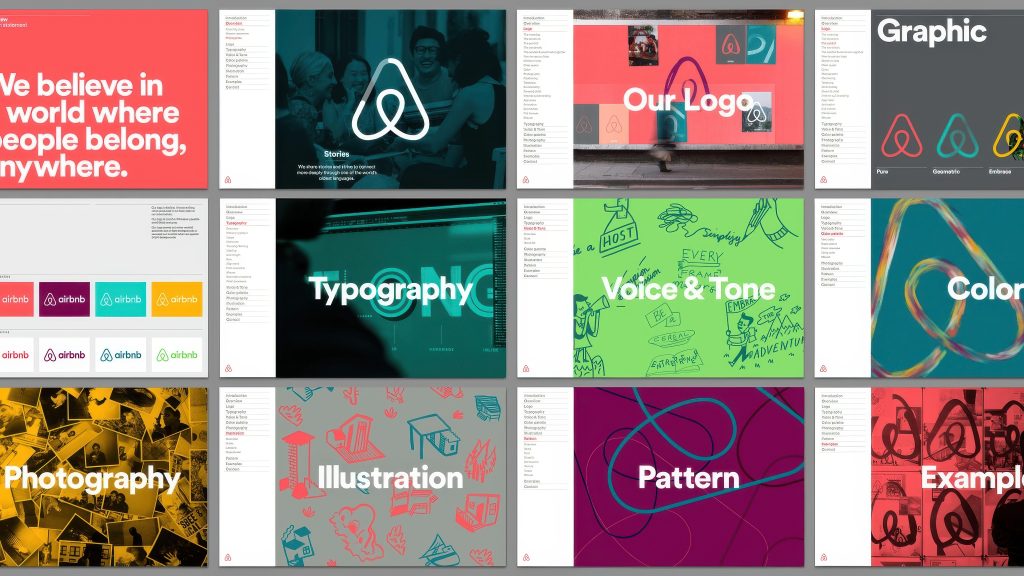Branding is More Than Visual Design

While visual design is a crucial part of the equation, true branding extends far beyond aesthetics.
Branding is a multifaceted concept that permeates every aspect of a business, from the way employees interact with clients to the values the company upholds. It’s about creating a cohesive narrative that resonates with the target audiences on a deeper level, fostering emotional engagement, loyalty, and trust.
Definition and Importance of Branding
Branding is a comprehensive strategic process that goes far beyond just visual elements like logos and color schemes. It encompasses how a company shapes its entire perception in the minds of all audiences, including clients, employees, and stakeholders. At the core, branding involves defining and communicating a company’s guiding principles (purpose, vision, mission, and values) and identity. This holistic approach ensures that every touchpoint with the brand— from client service interactions to product design—consistently reflects the company’s essence and promise. By carefully crafting and managing these elements, businesses can create a strong, cohesive identity that resonates with stakeholders and differentiates them in the marketplace.
Beyond Visual Design: Core Elements of Effective Branding
Branding is a strategic process that shapes how a company is perceived by its audience, but there are other non-visual factors that contribute to how the brand is built.
In today’s rapidly evolving business landscape, leadership plays a crucial role in shaping and maintaining a strong brand. Traditional, authority-based leadership models are evolving into more collaborative approaches that emphasize leading with influence, engagement, and shared responsibility. This shift in leadership paradigms can significantly impact how a brand is perceived both internally and externally. Leaders who embrace this new style are better positioned to engage employees and stakeholders, fostering a more authentic and resonant brand image.
The importance of effective communication in branding cannot be overstated. Training can help leaders and brand managers improve their communication skills, ensuring that the brand message is clearly conveyed and well-received in every interaction. By honing these skills, companies can more effectively articulate their brand values and differentiate themselves in a crowded marketplace.
Technology plays an increasingly important role in modern branding strategies. However, successful tech investments in branding go beyond just implementing new tools. The most effective approaches involve integrating technology solutions into strategy, operating models, data utilization, and company culture. This holistic approach to tech integration can help brands deliver value that goes beyond the initial hype of the latest and greatest tool to create lasting enhancements to the brand, employee, and client experiences being delivered.
As companies strive to build strong brands, they should also consider the broader context of sustainable and inclusive growth. This approach transcends traditional marketing metrics, integrating social and environmental factors as core dimensions of sustainable performance. By aligning their brand values with these broader goals, companies can create more meaningful connections with clients who increasingly prioritize sustainability and social responsibility.

Patagonia has cultivated a loyal client base and established itself as a leader in sustainable business practices.
Patagonia’s unwavering commitment to environmental stewardship has been a key driver of its brand success and reputation. By placing sustainability at the core of its business model, Patagonia has not only attracted environmentally conscious consumers but also set a new standard for corporate responsibility. Patagonia’s transparency about its sustainability efforts and ethical practices has further enhanced its appeal, as studies show that brands communicating their purpose are 64% more attractive to consumers. By consistently demonstrating its dedication to “saving our home planet,” Patagonia has cultivated a loyal client base and established itself as a leader in sustainable business practices, proving that environmental responsibility and commercial success can go hand in hand.
The Role of Consistency in Branding
Consistency plays a crucial role in building and maintaining a strong brand. It’s not just about having a great logo or catchy slogan; it’s about creating a cohesive experience across all touchpoints that reinforces your brand’s identity and values.
In today’s multi-channel world, brands must maintain consistency across various platforms to create a unified brand experience. This includes aligning visuals, messaging, and client experience in every interaction. Research shows that presenting a brand consistently across all platforms can increase revenue by up to 23%. This consistency helps clients recognize and connect with your brand, regardless of where they encounter it.

Airbnb demonstrates exceptional brand consistency, whether interacting through the app, website, or social media channels.
For example, Airbnb demonstrates excellent brand consistency. Their distinctive logo shape is used creatively in various ways, building a cohesive and instantly recognizable brand identity. This visual consistency extends to their messaging and client experience, ensuring that users have a seamless interaction with the brand whether they’re using the app, website, or engaging with Airbnb’s social media content.
Brand consistency is crucial for building trust and loyalty among clients. When a brand maintains a consistent image and message, it becomes more memorable and recognizable. This familiarity breeds trust, as clients come to associate certain qualities and experiences with the brand. In fact, 90% of potential clients expect a similar experience with a brand across all marketing platforms.
Consistent branding also helps differentiate a company from its competitors. In a crowded marketplace where many offerings may be similar, a strong and consistent brand can be the deciding factor for clients. By maintaining consistency in visual elements, messaging, and overall brand experience, companies can stand out and create a lasting impression on their target audience.

Richard Branson’s Virgin Group maintains a consistent brand promise centered around risk-taking, adventure, and customer-centric experiences.
Richard Branson’s Virgin Group exemplifies this principle. Despite spanning diverse industries from airlines to space travel, Virgin maintains a consistent brand promise centered around risk-taking, adventure, and customer-centric experiences. This consistency across ventures allows Virgin to evolve and expand while maintaining its core brand identity and authenticity.
To achieve and maintain brand consistency, companies should develop comprehensive brand guidelines that cover all aspects of their brand identity. These guidelines should be regularly reviewed and updated to ensure they remain relevant and aligned with the brand’s goals and strategy. Additionally, using templates and brand management platforms can help ensure that all employees can easily adhere to brand guidelines across all company communications.
In Summary
A universal approach to branding involves carefully crafting touchpoints throughout the client journey, ensuring consistency in messaging across all platforms, and developing a unique voice that sets the brand apart in a crowded marketplace. It’s about building a reputation, establishing credibility, and becoming an integral part of clients’ lives. At a deeper level, successful branding taps into the emotional core of consumers, creating meaningful connections that transcend mere product or service offerings. Essentially, effective branding is the art of transforming a business into a living, breathing entity with its own personality, values, and place in the world.
"*" indicates required fields
By signing up you are agreeing to our Privacy Policy.